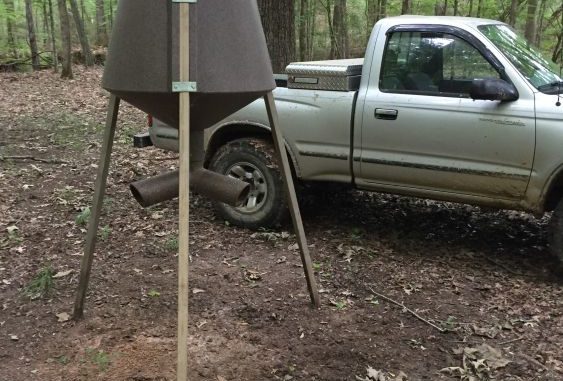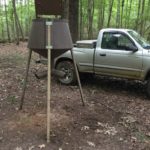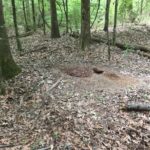
Minerals and supplemental feeding
I sit down to write this installment of Happy Trails after spending yesterday morning in the deer woods of southwest Mississippi, attending to tasks associated with supplemental feeder sites and salt/mineral stations. It was hot and humid and horse flies the size of nickels were buzzing around our heads, but other than that it was a fun and interesting time. It was an outing that was all about preparation for the upcoming hunting season. If you are not already thinking about and preparing for this coming fall and winter, you should be.
Let’s begin by talking about what is legal when it comes to supplemental feeding, and establishing mineral stations for whitetail deer during the summer months in the state of Mississippi. I would encourage every hunter to go online and thoroughly acquaint their self with the Mississippi Department of Wildlife, Fisheries, and Parks’, “Rule 2.4 Supplemental Feeding of Wild Animals Outside of Wildlife Enclosures.” To paraphrase parts of the regulation, it allows supplemental feeding only on private lands, requires solely the use of above-ground covered feeders or spin cast feeders, prohibits feed from being piled, poured, or placed directly on the ground, and that salt/mineral stations, blocks, and/or licks, may not contain any corn or grain products.
As the saying goes, “you are what you eat,” and this certainly holds true for a buck’s antlers. A younger aged buck needs about twice the amount of protein and mineral nutrients that an adult buck — three years old and up — needs. The younger buck is growing body first and then antlers, while an adult buck, especially one that has reached maturity, is past the body growth stage. It takes adequate amounts of calcium and phosphorus for a buck, at any age, to grow impressive antlers.
But, let’s get real about what we should actually expect when supplementing a deer’s diet with minerals as well as protein during the spring and summer months. Don’t go and give your resident bucks a mineral boost over the summer and then expect to automatically see trophy size bucks suddenly appearing this coming fall. The advantages of mineral supplementation have not been clearly proved by researchers, but since deer habitat is never perfect I don’t see any clear disadvantages either. Habitat type and quality varies greatly across deer country here in the Deep South. A given habitat can be nutritionally deficient, over populated, and/or mineral lacking, so from my personal viewpoint, I plan to continue to use supplemental minerals and protein. After all, what is wrong with enhancing your deer’s natural forage diet? Nothing, as I see it.
When it comes to mineral supplements, there are three main types of supplements. They are: (1) Food additives, where the minerals are combined with supplemental feed; (2) Mineral blocks that are placed on the ground or a rotting stump. It has been documented that this is the least effective way to supplement minerals; and finally, (3) Granular minerals that can be added to the soil where deer get them by consuming the soil/mineral mixture.
We have been primarily addressing a buck’s nutritional needs, but minerals are also very important for does, especially during their gestation and lactation periods. During this time frame, they have higher needs for calcium and magnesium. Mineral supplementation should certainly help to maximize milk production in your doe herd, and give your fawn crop a developmental boost.
I read recently that Mississippi State University deer researchers “found a strong correlation between soil mineral content (primarily phosphorus) and body size, although no correlation with adult antler size was found. They concluded that soil phosphorus levels were the best indicator of body size, probably because phosphorus deficient soils are common throughout the United States.”
Let’s now touch on some of the finer points of supplemental feeding of deer using both free-choice gravity feeders and automatic spin-cast feeders. Free-choice feeders rely on gravity to provide a steady supply of feed, while automatic feeders allow for control of the amount of feed that is distributed. Both systems work well with various commercial brands of water-resistant pelleted ration. The commercial brands of ration are quite attractive to deer due to their being enhanced with sweet flavoring. The pellets are also treated with a process that makes them water-resistant. Let me emphasize the word “resistant.” I didn’t say “waterproof.” This is where there is a clear advantage in using a closed gravity feed system over a spin-cast system that broadcasts the pellets on the ground around the feed station, rain or shine. Beware though, moldy water damaged pelletized feed is not healthy to feed, so keep your extra bags dry and watch out for potential water damage when you purchase and pick up feed.
Remember that now, toward the end of summer and into early fall your supplemental mineral and feed stations could be your absolute best spots to place trail cameras. Get an early start on surveillance and you will reap the rewards when the guns start booming.


